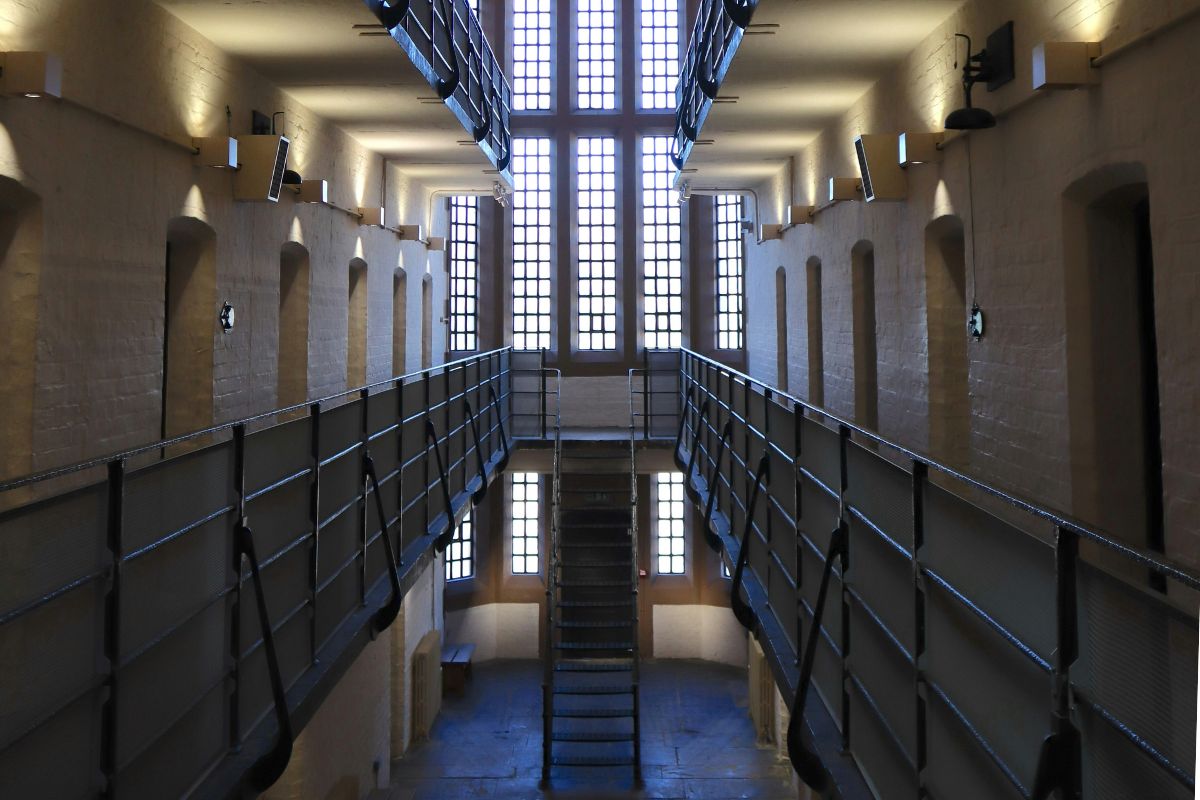10 important steps to help get your College back to business quickly & safely

If you work at a school, college or university in the UK, you’re bound to be feeling a mixture of emotions right now.
On one hand, emerging from lockdown is exciting — there’s a much-needed sense of normality from classroom schedules and break times. Plus, students are missing out on vital contact time with teachers.
At the same time, though, we need to approach these next few weeks with due caution. We aren’t out of the woods just yet.
You’ve of course got to look to the future. But in your position of authority, you still need to invest in all the necessary health and safety measures to keep your staff and students as safe as possible when term time resumes.
It’s a little nerve-racking, right?
In this guide, we’ll be breaking down ten of the most important steps that all schools and universities should be taking today, to make reopening as safe and as efficient as it can possibly be, according to CEO of hygiene and charging stations company, CleanedUp/ChargedUp Hugo Tilmouth.
A quick note on the legal requirements of reopening during a pandemic
Before we go any further, it’s worth saying that what follows is simply our advice on getting back to school the best you can. And while we will be referencing government guidelines throughout, it is important to read these guidelines in full yourself.
Please click here for full government guidelines on Education during COVID-19.
And on that note, let’s go ahead and dive right in. Here’s how all education providers should be preparing for term time as (un)usual, in the rest of 2020 and beyond…
1. Review all government guidelines, and take the necessary actions
When it comes to getting your school or university up and running post lockdown, your absolute first priority is to review and follow all government guidelines — which will vary depending on the level of education you provide.
While all schools and universities will need to follow similar procedures surrounding social distancing, PPE and cleanliness, they will not be following the same schedule or rules regarding reopening.
With that in mind, the rest of this guide will provide general information applicable to both schools and universities on matters surrounding social distancing, PPE and providing a generally safe environment for your staff and your students — whenever it’s safe to reopen.
2. Conduct a COVID-19 risk assessment
As an education provider and employer, it is your legal responsibility to protect the wellbeing of staff and students. Of course, this has always been the case — that’s why we do health and safety assessments each year.
But we’ve never seen anything like COVID-19 before. A pandemic requires totally new health and safety precautions and, as such, a more laser-focused way of assessing risk.
That’s why the HSE (the government agency responsible for Health & Safety regulation in the UK) have issued new guidelines that require all employers (including public sector organisations, like schools) to carry out new risk assessments in regards to COVID-19.
You can read through their official guide for more information on what this needs to cover specifically. Generally speaking, your coronavirus risk assessment should highlight all the things you’re going to do to limit the risks of COVID-19 within your premises.
This should include enforcing social distancing rules, setting up precise cleaning procedures, providing the necessary PPE, and keeping your staff and students up to date with how you’re going to protect them.
Once you’ve ticked those boxes, it’s worth displaying the government’s risk assessment certificate somewhere visible — to help put everyone’s minds at ease (including parents).
3. Offer hand sanitising
Government guidelines advise that frequent handwashing is the most effective way of preventing the spread of coronavirus. But when teachers and students are in the classroom or lecture hall, that isn’t always possible — and that’s where hand sanitisers come in.
Hand sanitisers are a quick and easy alternative to handwashing, and provide an unbeatable solution for minimising the spread, and protecting staff and students from COVID-19.
When picking a hand sanitiser, it’s important to be sure that it contains a World Health Organisation (WHO) approved formula and is at least 60% alcohol-based. You’ll also need to think about how the hand sanitisers are displayed around campus.
Dispensing stations, for example, are a great idea, as they make it clear that hand sanitiser is available. Placing sanitiser dispensers near corridors, reception desks and communal areas will make hand sanitiser widely accessible, which is key to the health and safety of both your students and staff. You can even get dispenser units customised with the school or university’s crest or branding!
For more information on providing NHS standard hand sanitiser for your staff and customers, click here to find out how we can help.
4. Cleaning & disinfecting
In an educational environment, cleanliness has always been important. But now, it’s life-saving.
Keeping your surfaces COVID-secure is going to be a team effort. So create a clear and focused rota, outlining everything that needs doing.
First, you’ll need to focus on the key surfaces that pose the most risk such as classroom desks and equipment — including books, pens and laptops — as well as outdoor equipment for any sports activities. Ideally, each of these items will need cleaning after every use to avoid any risks.
You’ll also need to make sure that your staff are extra vigilant in cleaning communal areas (like toilets and changing rooms) as these will pose some of the highest risk of transmission within your school.
Cafes and canteens should also follow strict cleaning procedures. This will need to include constantly cleaning tables, as well as undertaking extra measures in the kitchen itself. Please consult government guidelines for full and further information on food hygiene measures in relation to COVID-19.
Universities offering student accommodation will also have to take extra care in making sure that these rooms are as safe and as clean as possible for new student arrivals.
The good news is, government guidelines advise that your ‘usual cleaning products’ will be sufficient for this — so don’t worry about buying any specific formulas. As long as you stick to bleach or alcohol-based solutions, your efforts will be effective.
5. Provide PPE
Government guidelines stipulate that PPE is only essential in medical environments. But your staff, your students, and their parents might feel more comfortable if face coverings are allowed during the school day. to handing out worksheets.
This might only be possible for non-teaching staff and lecturers in-between classes, though, as face coverings aren’t ideal for teaching! Gloves, on the other hand, would be a sensible option for teachers — especially when it comes to handing out worksheets.
You could also consider installing plexiglass screens around reception desks where social distancing might be difficult to maintain.
6. Offer flexible work (and study) arrangements
Government rules state that all employers must provide flexible work arrangements whenever possible. This, in usual circumstances, means allowing your staff to work from home if they need to.
But it’s also important to take a flexible approach to work, more generally — especially for those at higher risk. Try to be understanding of your staff’s home-lives and responsibilities; if they need to care for a friend, or homeschool their child, you should support them in this.
And, of course, grant immediate time off if anyone reports coronavirus symptoms. Remember, it’s still mandatory for those with a fever or new, persistent cough to self-isolate under government guidelines.
It’s worth noting that this level of flexibility should be extended to students, too. If they need to study from home, for example, you should be supportive of this and make the resources required quickly available.
7. Enforce social distancing rules
Official government guidelines state that all staff and students must keep a 2m distance at all times. This is the best and most effective way of preventing the spread of coronavirus, as it decreases person-to-person transmission.
To enforce social distancing measures on campus, you should:
Provide 1m markers that remind everyone of the distance they should be keeping
Be mindful of the number of students in a classroom at any one time Consider decreasing class sizes if necessary
Staff areas should be reassessed, too. If it’s difficult for staff to maintain social distancing while in the canteen, common room or staff room, you should consider putting a cap on the amount of people allowed in together, and separate seating areas as much as possible.
8. Provide clear guidelines and signage right across the premises
While we’re surrounded by coronavirus news most of the time, it’s still wise to leave a few health and hygiene reminders for staff and students to see.
We’ve already mentioned 1m markings, but there are a number of other visual cues you can lean on during this time. Posters, for example, are a good way to remind pupils and staff to wash or sanitise their hands, always cover their mouth when they cough, and sneeze either into a tissue or their arm if necessary.
Additionally, if you choose to implement any new systems (like walking single file in corridors or a ban on cash transactions in the canteen), do all you can to make this as clear as possible, to avoid any confusion or frustration.
9. Manage the risk of transmission
When, or if, 1 metre distancing isn’t possible, you should do all you can to manage the risk of transmission. This means providing alternative and new ways of working and studying that put the safety of your staff and students first.
As we’ve already touched on, you might need to decrease class sizes and allow fewer students into communal areas. You might also need to suspend certain sport lessons — close contact sports like rugby and even netball would be a no-no for a while to come.
10. Consistently monitor employee health (and general circumstances)
Health and wellness monitoring is an extremely important part of protecting staff, students and your school.
Each day, you should check in with your team and ask about their health and general circumstances. If a member of your team is unwell, or if someone in their household has symptoms, you should take immediate action and grant them sick leave — as advised by the government.
You should also encourage your staff to be open and honest with you about their situations. This means showing understanding, and making it easy for your team to request time off if they need it. And, in turn, coach them to be the same with their students. Kids will be prone to environmental stressors — exam pressure, fear for loved ones, etc. — so do all you can to be kind and compassionate.
Remember, when we overcome the virus, we’ll have done so as a collective — not as one person, or one school, putting their needs first.











Responses